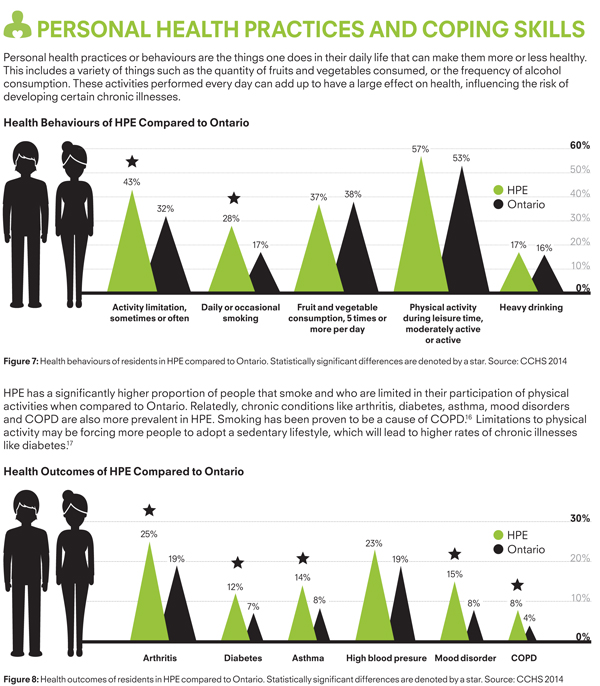Higher rate of early and avoidable deaths in ‘snapshot’ of region’s health equity report
Administrator | Oct 02, 2017 | Comments 0
Residents of Hastings Prince Edward County have a high level of premature deaths, and avoidable mortality (treatable or preventable causes) compared to the Ontario average. Lack of accessible health services is the major reason cited – particularly for treatment of chronic conditions and regular medical check ups.
That is one of numerous findings in a snapshot of the state of the region’s “determinants of health”, in comparison with provincial averages, created to inform local communities and address inequities.
Veronica Montgomery is scheduled to make the health equity report presentation she wrote with Michael Elten on Wednesday, Oct. 4 at the Hastings Prince Edward Public Health meeting in Belleville.
The potentially avoidable mortality rate in Hastings Prince Edward is 253.3, while Ontario’s rate is 192.5. The premature mortality rate is 348.4 while Ontario’s is 267.2. (Age-standarized rate per 100,000 population).
“Large parts of Hastings Prince Edward, like many other rural areas in southern Ontario, have very low accessibility to primary care physicians,” their report states. “Many of these places have a minimum driving distance of 30 minutes or more to the nearest physician, providing a substantial barrier to medical care.”
Social determinants are non-biological factors that influence health.
“They are a major cause of health inequity within a population, making some groups of people healthier than others,” their report states. The Ontario Public Health Standards lists a set of determinants which include income, education and employment, among others.
“Addressing these determinants and their effects on health is a key role of public health units in Ontario. This is an important step in improving the health of not only the most vulnerable people, but of the entire local population.”
Some highlights from the report:
The poorest people in Ontario feel the least healthy. Those with less money tend to have poorer childhoods, education, employment, working conditions, housing and food security. Hastings Prince Edward’s percentage of low-income households is 14.8 per cent compared to 13.9 per cent in Ontario.
Hastings Prince Edward has a higher proportion of people without secondary school completion when compared to Ontario. The unemployment rate for those ages 15-plus in Hastings Prince Edward is similar to the Ontario rate at just over eight per cent.
Social deprivation – measured by people living alone, people separated, divorced or widowed, and the number of single parent families – show many regions in Hastings Prince Edward compare poorly with Ontario. While the exact link between social support and health is still being understood, Montgomery’s report states lower social support is associated with higher mortality rates, higher cardiovascular diseases, worse pregancy outcomes and mother-infant interactions.
“There is evidence supporting both a ‘direct-effect model’ and a ‘buffering model’,” states the report. “While more research needs to be done, it is likely a combination of these two models that describes how good social support promote one’s well-being.” Direct-effect model – relationships have a positive effect on one’s health no matter the circumstances. Buffering model – relationships are important for helping people when they are in high stress situations.
A higher average of people who smoke and don’t exercise, is related to chronic conditions like arthritis, diabetes, asthma, mood disorders, high blood pressure and COPD. Hastings Prince Edward counties has a significantly higher proportion of people who smoke and are limited in their physical activities, compared to the Ontario average.
Using ratings of kindergarten students by their teachers on physical health and well-being; social competence, emotional maturity; language and cognitive development, communication skills and general knowledge, 34-44 per cent of children in Prince Edward County are vulnerable in one or more areas.
“The conditions and experiences that a child faces have been seen to carry implications throughout the rest of their adult life,” the report states. “Stress and other negative circumstances are most damaging if experienced within the first six years of life, the most important time for brain development.”

Filed Under: Local News
About the Author:
































